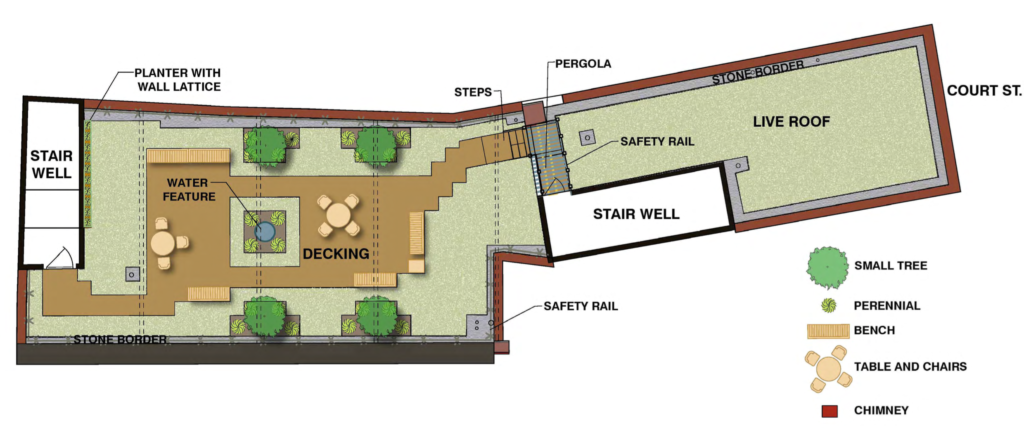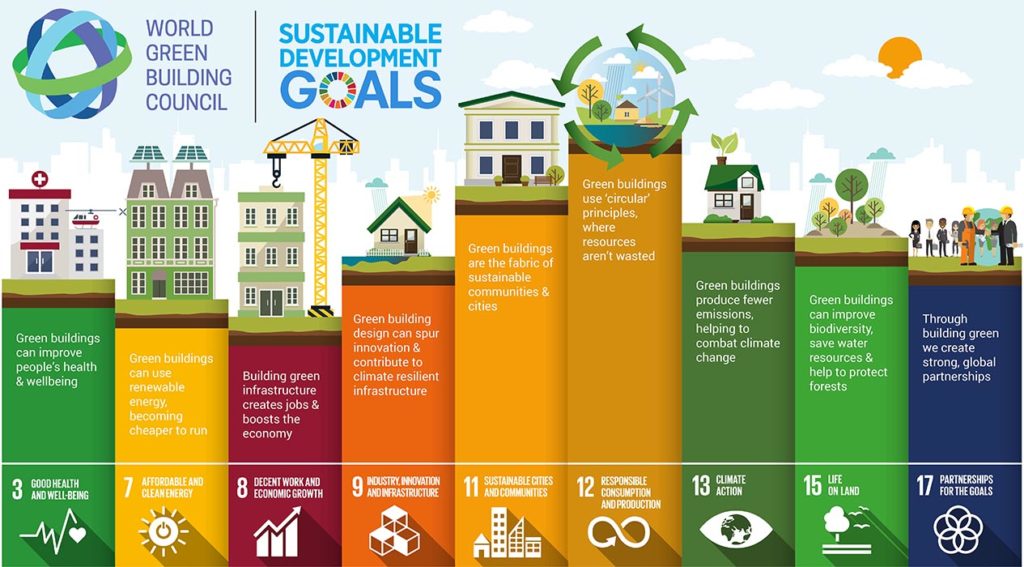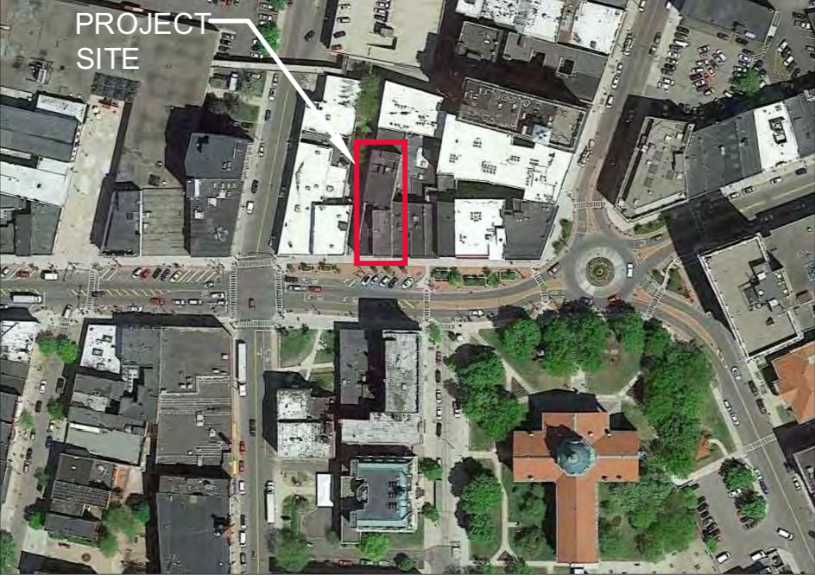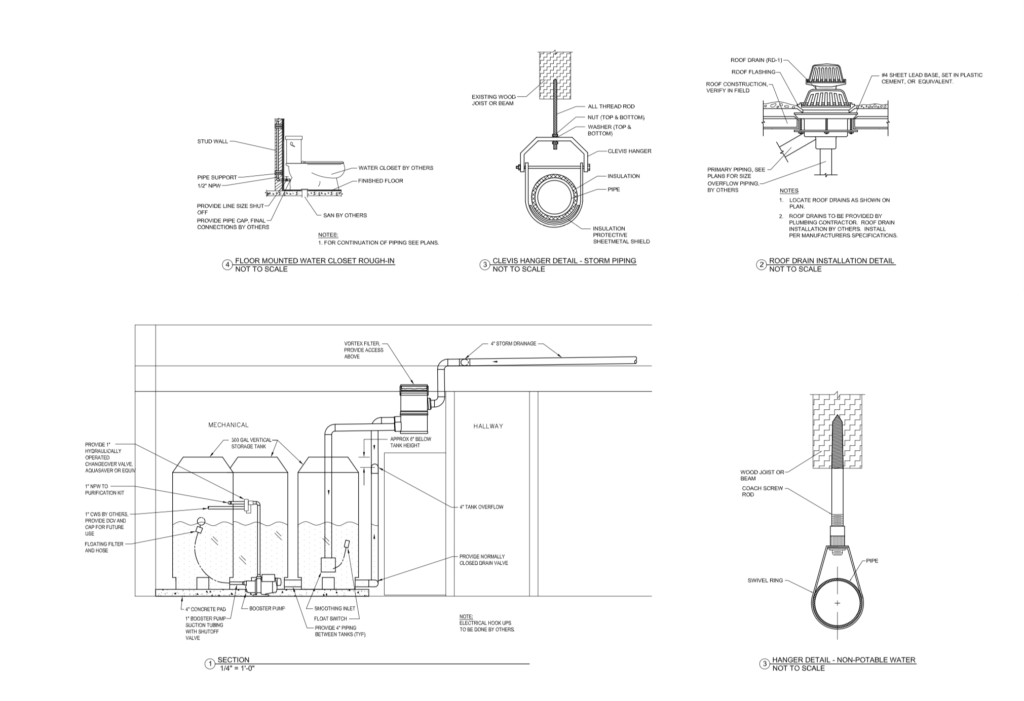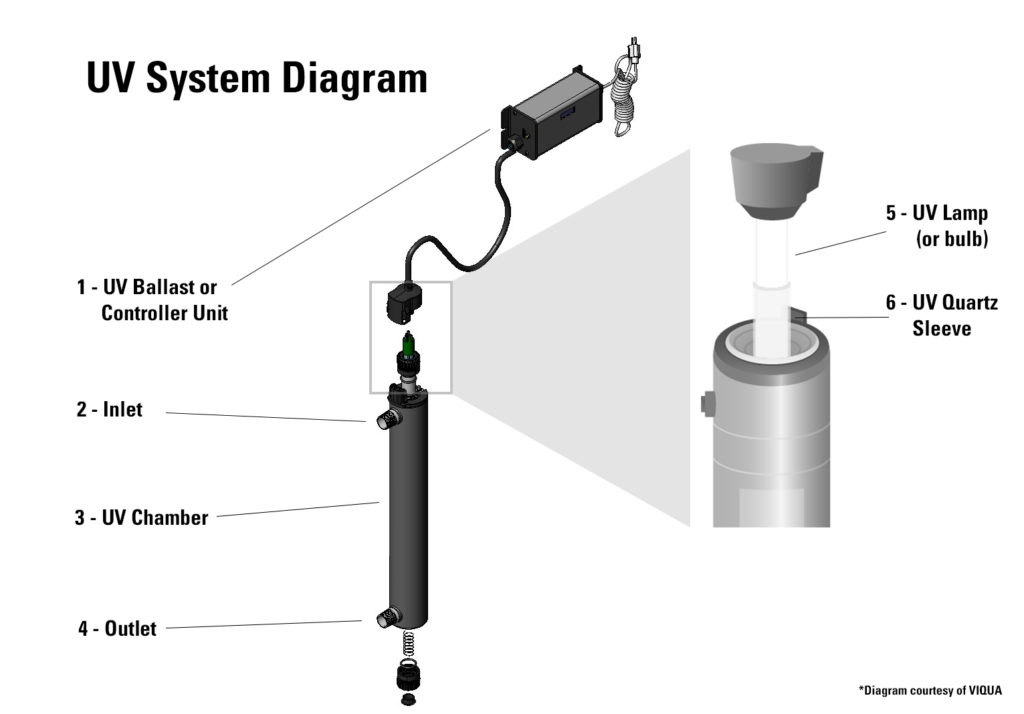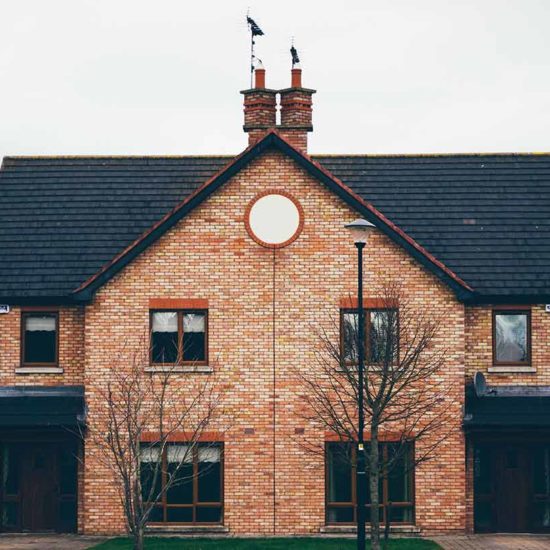City Center Lofts Green Roof: Sustainable Development and the Power of Economic Incentives
In the Southern Tier of New York urban revitalization initiatives face a plethora of issues, among which the confluence of population growth, aging infrastructure, and harsh climate conditions is particularly prescient. This is increasingly exemplified by municipal sewage systems inability to fully address the scope of storm water management and treatment demands. While public and private actors alike have a vested economic interest in rehabilitating and repurposing aging property stock for commercial and residential purposes, urban revitalization can have a substantial positive impact on public utilities and goods if harnessed in the right way, including how we handle storm water. One important path toward this potential future is economic incentives for sustainable development.
Source: World Green Building Council
A project exemplifying the positive impact that economic incentives for sustainable development can have on urban revitalization in the Southern Tier is the City Center Lofts green roof, located at 73 Court Street in the heart of Binghamton’s Downtown Historic District.
The City Center Lofts project is an accessible green roof with a harvesting system for stormwater collection and recycling.Completed in December of 2018, the project was designed by Haas Landscape Associates and funded by the Green Innovation Grant Program (GIGP), which “supports projects across New York State that utilize unique stormwater infrastructure design and create cutting-edge green technologies (EFC, No Date).” The GIGP is managed by the Environmental Facilities Corporation and funded through the Department of Energy as part of the New York State Clean Water Revolving Fund Program.
Here’s how it works:
1) A waterproof membrane was layered over the existing roof, with a drainage mat on top. Wood decking for access is constructed on pedestals.
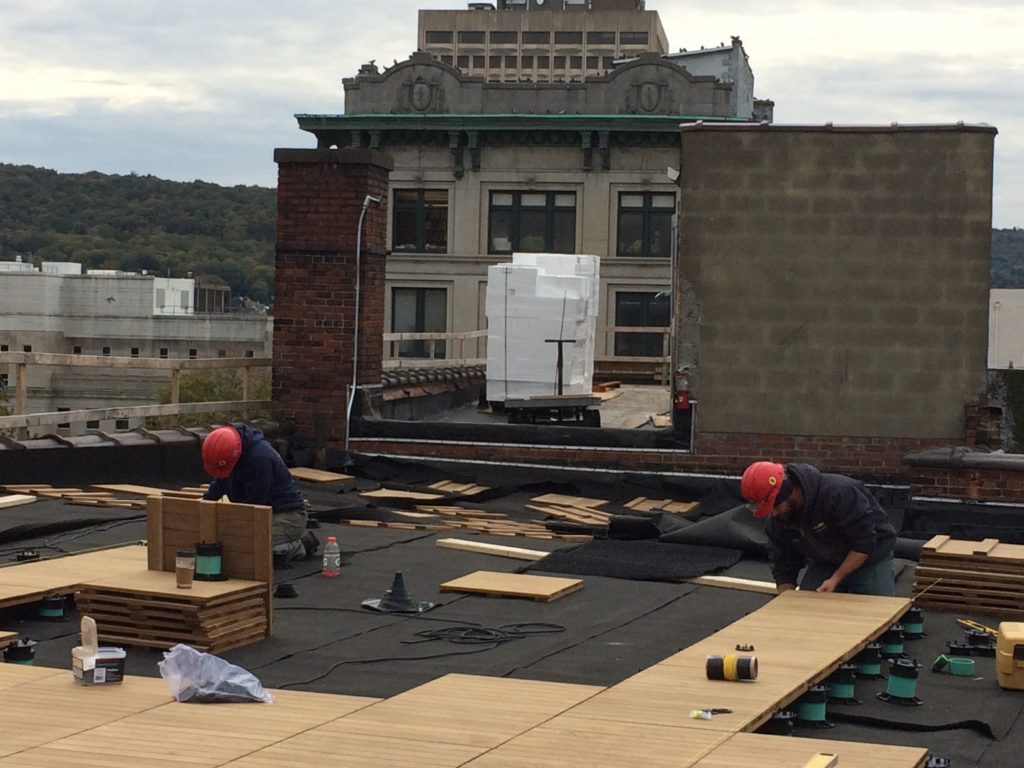
The decking is surrounded by 1’x1′ LiveRoof modules. These modules are planting beds filled with vegetation mixes tailored for survival in the harsh winters of Upstate NY. When it rains, storm water is absorbed into the vegetation’s soil.
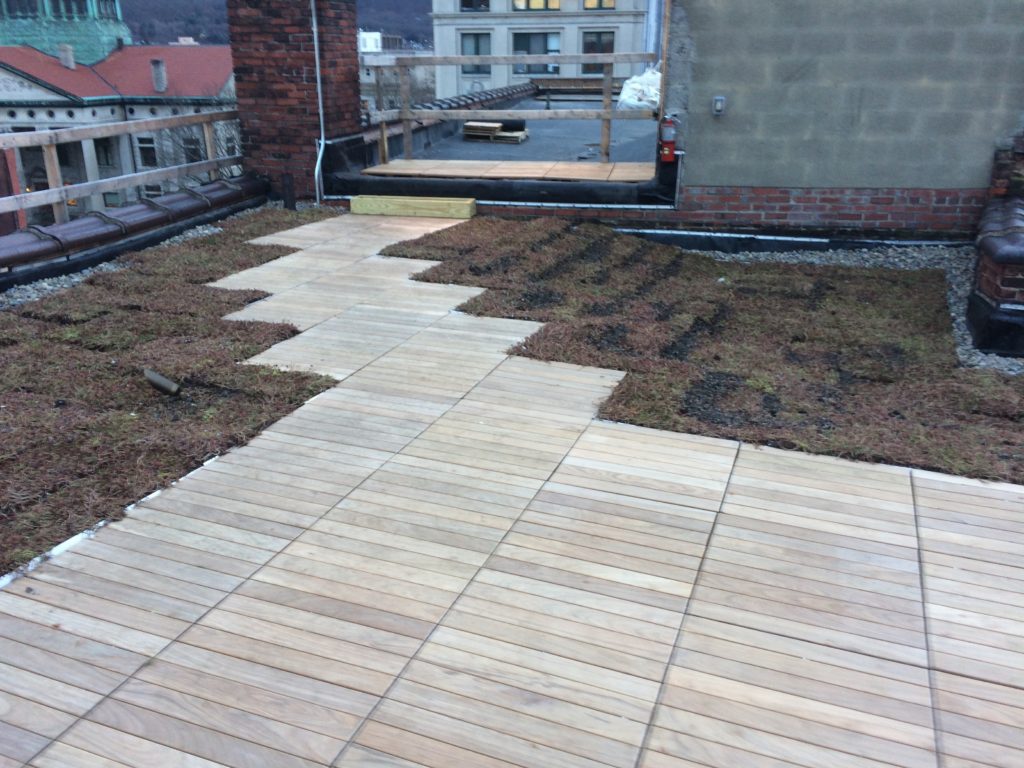
2) Runoff not absorbed by the LiveRoof soil enters roof drains connected to a storm water harvesting and recycling system in the fifth floor of the building. The harvesting system pumps runoff through a vortex filter, removing large solid wastes before it enters three 300-gallon vertical storage tanks. Runoff is stored in these tanks until it is demanded by water closets throughout the building.
3) When leaving the tanks runoff water is pumped through a combination charcoal and UV filter system that eliminates existing contaminants. Runoff is sent to water closets, where upon flushing it will enter into the municipal sewer system.
It is widely acknowledged that basic membrane roofing for commercial and residential properties ties into storm water mismanagement, water pollution, energy inefficiency, poor air quality, urban island heating effect, and more (Liu & Baskaran 2003). In contrast, the use of vegetative roofs, also known as green roofs, have proven to mitigate these impacts while also providing an aesthetically pleasing communal space. Yet despite these benefits high initial costs and maintenance concerns continue to keep building owners from making the shift (Wong 2003). By bridging the economic gap to feasibility, programs like the GIGP help our communities reduce water waste entering municipal storm water systems, decrease water costs for owners/tenants, and beautify urban centers through green communal space. The City Center Lofts green roof exemplifies these public and private benefits, showcasing the power and necessity of programs like the GIGP.
For more information on the Environmental Facilities Corporation or the Green Innovation Grant Program please visit the EFC’s website at https://www.efc.ny.gov/GIGP
Sources
Environmental Facilities Corporation. No Date. Green innovation grant program overview. online: https://www.efc.ny.gov/Default.aspx?tabid=461
Liu , K.K.Y. , Baskaran , B., 2003. Thermal performance of green roofs through field evaluation. Proceedings for the first North American green roof infrastructure conference, awards, and trade show, Chicago, IL, May 29 – 30. pp. 1 – 10.
United Nations Department of Economic and Social Affairs, 2018, 68% of the world population projected to live in urban areas by 2050, says UN, 5/16/18, online: https://www.un.org/development/desa/en/news/population/2018-revision-of-world-urbanization-prospects.html
Wong , N.H. , Chen , Y. , Ong , C.L. , Sia , A., 2003. Investigation of thermal benefits of rooftop garden in the tropical environment. Building and Environment. 38 , 261 – 2 70.


